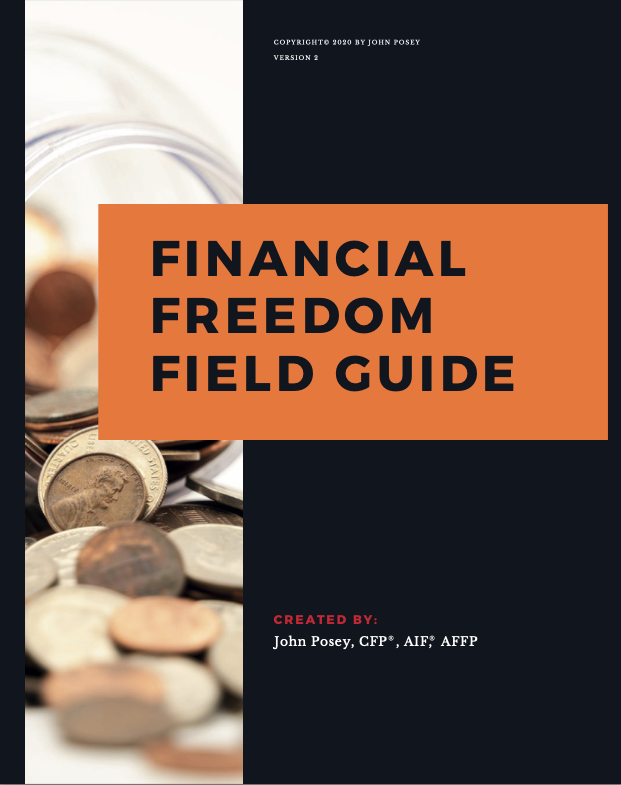The picture above is one of my favorite illustrations of all-time created by New York Times author and financial planner, Carl Richards. It really is funny because it’s true, but more funny if you’re aware enough to avoid this mental trap that’s much too easy to fall into. Carl recently wrote an entertaining piece on how fear and greed kill returns and you can read it below.
Carl talks about the time leading up to the stock market crash in the early 2000s and how money poured into stocks at record pace, particularly into tech companies as the hype of the dotcom era circulated (This story seems analogous to Bitcoin, but that’s a conversation I’ll save for another day). Carl makes an interesting observation as the subsequent stock market crash ensued. Where do you think much of the money went that was being sold out of the equity markets? Answer: the bond market, where bond prices were near record highs. Wow, that doesn’t seem brilliant, does it? That’s repeating until broke in action!
Carl put it like this:
Can you imagine doing this in any other setting? Picture walking into an Audi dealership and saying, “I need a new A6,” the salesperson says, “Oh my gosh, you’re in luck, we just marked them up 30%,” and you say, “Awesome, I’ll take three!”
Now, if that didn’t awaken you to the lunacy that takes place in volatile markets, I don’t know what will! Beware of following the herd and always remember, financial discipline equals financial freedom.
***
Greetings, Carl here.
Most of us make the same mistake with our money over and over: We buy high out of greed and sell low out of fear, despite knowing on an intellectual level that it is a very bad idea.
The easiest way to see this behavior in action is to watch money flow in and out of mutual funds. Let’s go back to early 2000. The dot-com market had reached a fevered pitch. People were using their home equity to buy tech stocks right after the NASDAQ had a single-year return of better than 80 percent!
Then, in January 2000, investors put close to $44 billion dollars into stock mutual funds, according to the Investment Company Institute, shattering the previous one-month record of $28.5 billion. We all know the story from there. Money continued to pour into stock funds, breaking records for February and March and pushing the NASDAQ to 5,000, only to lose half of its value by October 2002.
This gets worse. That same October (at the low for the cycle), as investors were selling stocks as fast as they could, where was all the money going? Into bond funds, at a time when bond prices were near record highs.
Think about this pattern for a minute. At the top of the market, we can’t buy fast enough. About three years later, at the bottom, we can’t sell fast enough. And we repeat that over and over until we’re broke. No wonder most people are unsatisfied with their investing experience.
I realize this is a story from ancient history; 2001 feels like a long time ago. But we do this again and again. At this point, there’s a story like this every month.
Can you imagine doing this in any other setting? Picture walking into an Audi dealership and saying, “I need a new A6,” the salesperson says, “Oh my gosh, you’re in luck, we just marked them up 30%,” and you say, “Awesome, I’ll take three!”
Look, I get it. We’re hardwired to get more of what gives us security and pleasure and run away as fast as we can from things that cause us pain. That behavior has kept us alive as a species. Mix that with our desire to be in the herd, the feeling that there’s safety in numbers, and you get a pretty potent cocktail. When everyone else is buying, it feels like if we don’t join them, we’re going to get eaten by the financial version of a sabertooth tiger.
But I’m telling you, this behavior is terrible for us when it comes to investing.
Of course, it’s important to know that it’s totally normal to feel fear and greed or to be scared when the markets are scary. The fact that you feel those things just means you’re human.
It’s ok to feel it. But understand that acting on it will cause financial harm.
So do the things you need to do so you don’t act on fear and greed. That could mean staying out of the kitchen, building guardrails, having a plan, hiring a planner. Whatever you need to do, just do it.
I have found that just knowing this helps me behave better. I hope that will also be true for you.
-Carl
Advisory services offered through Plains Advisory LLC, an investment adviser registered with the State of Nebraska. Insurance products and services are offered and sold separately through John Posey, a licensed insurance agent. No investment strategy can guarantee a profit or protect against loss in periods of declining values. Opinions expressed are subject to change without notice and are not intended as investment advice or to predict future performance. Past performance does not guarantee future results. Any information provided is designed to provide general information on the subjects covered, it is not, however, intended to provide specific legal, tax, financial or investing advice and cannot be used to avoid tax penalties or to promote, market, or recommend any plan or arrangement. Material presented is believed to be from reliable sources and no representations are made by our firm as to another parties’ informational accuracy or completeness. All information or ideas provided should be discussed in detail with an advisor, accountant or legal counsel prior to implementation.


